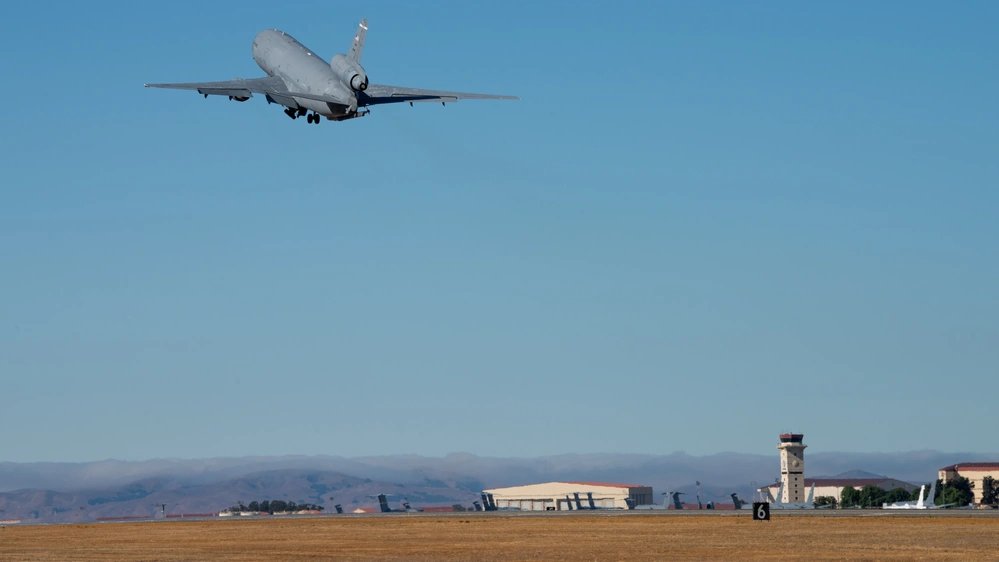

On September 26, 2024, the U.S. Air Force’s last KC-10 Extender took off from Travis Air Force Base, California, for long-term storage at Davis-Monthan Air Force Base, Arizona. In a farewell ceremony to the aircraft, Travis AFB and Air Mobility Command marked the end of the aircraft’s over 40 years of service. “Travis AFB will have the honor of bidding farewell to an aircraft that has been a vital component of the U.S. military’s global reach and power projection capabilities for more than four decades,” AMC said in a statement.

The KC-10 first entered service in March 1981. Based on the McDonnell Douglas DC-10 airliner, the Extender features a visually-distinct triple-engine layout. Developed from the Advanced Tanker Cargo Aircraft Program, the KC-10 was tasked with both aerial refueling and transport duties throughout its service. Developed to supplement the Boeing 707-based KC-135 Stratotanker, 60 KC-10s were produced for the U.S. Air Force.

Notably, the DC-10 competed against Boeing’s 747 to become a military tanker/transport. The DC-10’s ability to operate from shorter runways was a major factor in its selection. Although the KC-10 features military-specific equipment to support its refueling and transport duties, the aircraft shares 88% commonality with the commercial variant. This allowed the Air Force to operate the Extender at a lower cost and opened up a worldwide market of support systems.

In 1986, the KC-10 performed its first combat operations supporting airstrikes against Libya during Operation El Dorado Canyon. Five years later, the Extender played a vital role in the air campaigns of Operations Desert Shield and Desert Storm. Along with the KC-135, the KC-10 conducted over 51,000 separate refueling operations and delivered 125 million gallons of fuel; not a single scheduled rendezvous was missed. Moreover, thousands of troops and thousands of tons of cargo were delivered in support of the massive coalition buildup.

Following the terror attacks on September 11, 2001, KC-10s flew more than 350 missions over the U.S. in support of Operation Noble Eagle. During the Global War on Terror, KC-10s flew over 1,390 missions in support of Operations Enduring Freedom and Iraqi Freedom refueling both U.S. and allied Coalition aircraft. As the Boeing 767-based KC-46 Pegasus neared introduction, the first KC-10 was retired in July 2020. The next year, while KC-10 squadrons began converting to the KC-46, Extenders played a vital role in the evacuation of Afghanistan under Operation Allies Refuge.

With the 60 KC-10s retired, the Air Force’s aerial refueling fleet now consists of nearly 80 KC-46s and over 370 KC-135s. As of its retirement, three examples of the Extender are on static display: aircraft 79-0433, the first to be produced, is at the Air Mobility Command Museum at Dover Air Force Base, Delaware; aircraft 84-0185 is at the March Field Air Museum at March Air Reserve Base, California; and aircraft 84-0191 is at the National Museum of the United States Air Force in Dayton, Ohio.
